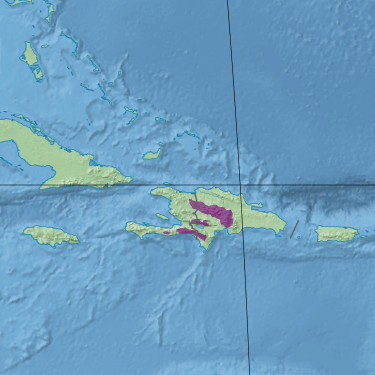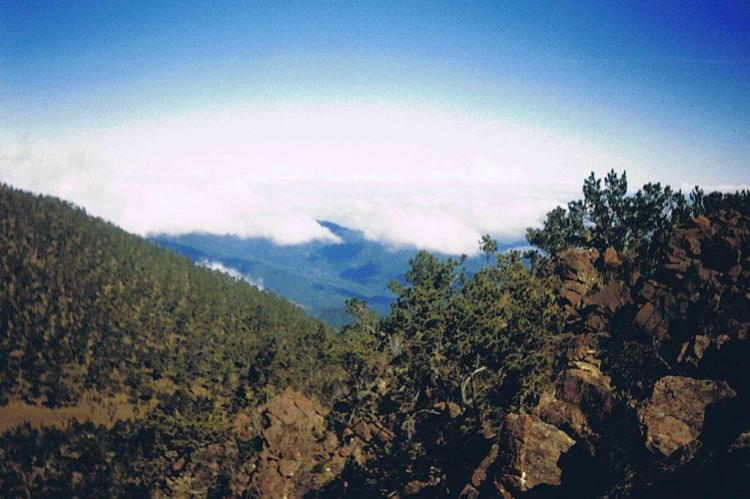Hispaniola’s Mountain Pine Forests: A Refuge for Endemic Species
The Hispaniolan Pine Forests represent one of the most distinctive ecoregions on Hispaniola, home to the Dominican Republic and Haiti. Located in the Greater Antilles, this ecoregion is predominantly in the island's central mountainous areas and supports many endemic species.
The Hispaniolan Pine Forests: A Unique Ecoregion of the Greater Antilles
The Hispaniolan Pine Forests represent one of the most distinctive ecoregions on Hispaniola, home to the Dominican Republic and Haiti. Located in the Greater Antilles, this ecoregion is predominantly in the island's central mountainous areas and supports many endemic species. Once covering large portions of the island's highlands, these forests are now confined mainly to higher elevations due to deforestation and land degradation. Despite these pressures, they remain a vital refuge for biodiversity and a key component of Hispaniola's natural heritage.
Geographical Overview
The Hispaniolan Pine Forests are situated on the slopes of Hispaniola's mountain ranges, including the Cordillera Central in the Dominican Republic and the Massif du Nord in Haiti. These forests primarily grow at elevations between 850 and 3,175 meters (2,800 to 10,400 feet), with the majority found at higher elevations above 2,100 meters (6,900 feet). Their natural habitat includes shallow soils, steep slopes, and areas influenced by cooler temperatures and higher rainfall.
These forests were once more widespread, covering approximately 15% of the island's original vegetation. Today, remnants of the ecoregion can still be found in protected areas of both countries, such as the Sierra de Bahoruco in the Dominican Republic and the Massif de la Selle in Haiti.
Protected Areas within the Ecoregion
Sierra de Bahoruco National Park
Located in the Dominican Republic, this park is part of the Bahoruco Mountain Range and contains large stands of pine forests, particularly at higher elevations. It is one of the most significant protected areas for conserving the island's endemic species.
Parque Nacional José del Carmen Ramírez
Also in the Dominican Republic, this national park protects the central portion of the Cordillera Central, with pine forests dominating the landscape above 1,500 meters (4,920 feet).
Pic Macaya National Park
Situated in the La Hotte Massif in southwestern Haiti, Pic Macaya National Park contains a portion of the island's remaining pine forests, threatened by deforestation and agricultural expansion.
La Visite National Park
This park is another critical refuge for the Hispaniolan pine forests in the La Selle Massif in southeastern Haiti. Human activity has heavily impacted the region, but conservation efforts aim to protect the remaining forests.
Ecological Characteristics
The Hispaniolan Pine Forests are dominated by Pinus occidentalis (commonly known as pino criollo), an endemic species to the island. These forests thrive at higher elevations, and their distribution is influenced by the island's climatic and soil conditions. Other notable tree species within the forest include Juniperus gracilior and Podocarpus aristulatus, which coexist with pines in the montane areas.
At lower elevations (below 2,100 meters or 6,900 feet), the pine forests are often mixed with patches of wet montane forests and broad-leaved species. Among these species are Garrya fadyenii and Vaccinium cubense near Constanza and the Sierra de Bahoruco, while Rapanea ferruginea can be found in areas like Jarabacoa. The montane steppe, located at elevations above 2,100 meters, supports a range of other plants, such as Cojoba arborea and Weinmannia pinnata.
These forests also play a crucial role in supporting a variety of endemic and endangered wildlife. The Hispaniolan Hutia (Plagiodontia aedium) is a notable example, being one of the few remaining native mammals on the island. The region is also home to a remarkable diversity of birds, with six endemic genera, including Calyptophilus, Nesoctites, and Microligea, contributing to the island's unique avifauna.
Flora and Fauna
The Hispaniolan pine forests harbor a rich variety of endemic species, many of which have adapted to the region's limestone and serpentine soils. The predominant species is Pinus occidentalis, which forms the backbone of the forest alongside Juniperus gracilior and Podocarpus aristulatus. These pines are well-suited to the harsh environmental conditions of the island's mountainous regions, where thin soils and frequent fires challenge plant survival.
Several broad-leaved species also thrive in the region, including Garrya fadyenii, Vaccinium cubense, Cojoba arborea, and Weinmannia pinnata. These plants are particularly common in the montane steppe, where they adapt to cooler temperatures and higher elevations.
In addition to its rich plant life, the pine forests are home to numerous animal species, including many that are endemic to the island. The Hispaniolan Hutia, a rodent species native to the island, is one of the most notable inhabitants of the pine forests. The forests also support a wide variety of reptiles, amphibians, and invertebrates.
The avifauna of Hispaniola is particularly diverse, with several bird species and genera unique to the island. Notable endemic bird genera include Calyptophilus, Nesoctites, Phaenicophilus, and Xenoligea, which contribute to the island's distinct bird population.
Conservation Status and Threats
The Hispaniolan Pine Forests are classified as vulnerable due to ongoing threats from deforestation, land-use changes, and unsustainable agricultural practices. Over half of the original habitat has been lost, primarily due to gathering firewood, livestock grazing, and human-induced fires. As a result, much of the remaining forest is located within fragmented patches in higher elevations, where conservation efforts are focused.
Protecting these forests is critical for maintaining the island's biodiversity and ecological health. Various conservation initiatives are underway to preserve the remaining tracts of forest, including reforestation efforts, the creation of new protected areas, and programs to promote sustainable land use in nearby communities.
Conclusion
The Hispaniolan Pine Forests stand as a unique and critical ecoregion in the Greater Antilles, offering a sanctuary for the island's rich biodiversity. While they have been significantly reduced due to human activity, efforts to conserve the remaining forests are essential for preserving Hispaniola's natural heritage. The pine forests' endemic species and distinct ecosystems of the pine forests represent a valuable natural resource that requires ongoing protection and sustainable management.

Map depicting the location of the Hispaniolan pine forests (in purple).
